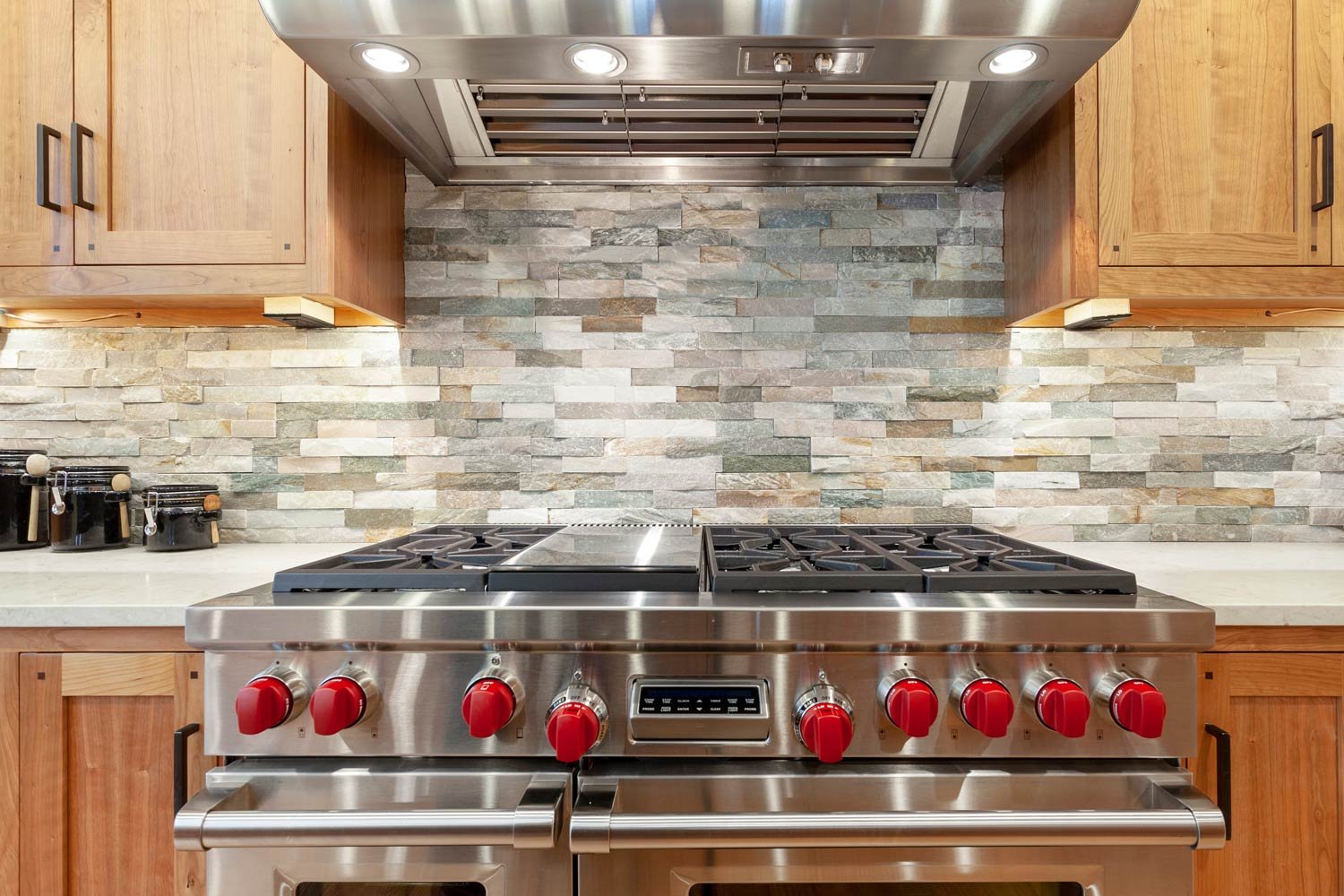Backsplashes: Your Kitchen’s Backup Plan
The humble kitchen backsplash has come a long way over the years. What started as a barrier to protect walls from cooking-related mishaps has evolved into a bold, decorative statement in its own right.
Backsplashes back in the day
Early backsplashes were made from common countertop materials of the time, such as Masonite or tile. These basic materials mainly aided in their chief feature: easy cleaning. Over the years, other considerations included materials which can better stand the heat in the kitchen—literally—as well as the humidity, and one that can shrug off the staining some foods can inflict.
The material of choice, or course, should harmonize with the rest of the room. If your kitchen has a commercial or industrial feel, materials such stainless steel or the old standby—subway tile—can visually augment these spaces. But there are many options these days, so why limit yourself? Anything from polished tile of various shapes, mirror glass, or even tin ceiling panels can be used, but then there’s that pesky necessity for easy cleaning, so consider each choice carefully. Also, the surface must withstand frequent contact with anything from soap and water to household products, and so durability is also of the utmost importance.
Where function and good taste meet
Of course, when talking about backsplashes, tile is a great option. It’s durable, easy to clean with water and a mild soap, and there are a myriad of options so you can be guaranteed you’ll be able to perfectly match the décor of your kitchen. You can choose from endless configurations too: square tiles, tiles arranged in columns, grids or brick-style layouts, mosaics, or even round tiles and random shapes and arrangements. Also of note is the width of your grout lines. Variation in these—from the 1/8” to 1/4” for example—can alter the visual appearance greatly, as does the scale of the tile. Size does matter in relation to the kitchen’s dimensions versus the size of the tiles. Some materials for tiling include ceramics or porcelain, painted tile, glass of various sizes or metal—or a combination of these. Each has its own advantages. For example: Glass tiles are non-porous and won’t require sealing, and they can stand up to household chemicals which may be needed to clean them. Also, consider the reflectiveness of the tile, as a polished surface can reflect light in a room, enhancing a smaller kitchen.
A very attractive option in modern kitchens is natural stone. But again, be aware of the pitfalls, literally in this case, of each material. Natural stone is beautiful and durable, but it’s porous and therefore needs to be sealed regularly. Also, the color of stone can vary greatly, so matching it in relation to color can be tricky. If the surface is uneven, cleaning can be difficult due to splattered foods getting caught in pits in the stone, as well as the grout in between. Manufactured stone can be an option as well. It can be easier to install than natural stone and since it’s manufactured, it won’t have to be sealed, though some of these surfaces can still remain porous and susceptible to staining.
Along these lines, there are materials such as marble, which is beautiful but can require extensive maintenance, and travertine, perhaps more durable and made from limestone, whose pitted surface even though sealed, can harbor food material in its deep pits and grooves.
The backsplash can add greatly to the look of your kitchen as well as the value of your home. With the help of Bernhardt’s remodeling experts, your new backsplash will endure years of use with a look that will stand the stains of time.
Contact us today for a free design consultation to discuss your kitchen remodeling needs.

